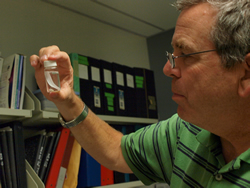Biology Students Score Big with Research

Jul 27, 2015

Undergraduate biology students wanting a fast track into the world of biodiversity and conservation are not likely to find a better place to start than the Miami University regional campuses.
Three Miami Hamilton students who graduated last year after working in Dr. David Berg's Aquatic Biodiversity and Conservation Laboratory have had papers published already, and two recent graduates have papers that will be submitted for publication before they begin graduate school.
"The coin of the realm in scientific research is publication," Dr. Berg, a Hamilton Campus professor of biology, said one recent afternoon in his Pearson Hall lab in Oxford. "At a government agency such as the Ohio Department of Natural Resources, you might not be doing research, but you're going to have to write reports. The fact that you've demonstrated that you can write and have met the standards of a scientific journal during your undergraduate education is really important.
"If you're going to graduate school," he said, "publishing a paper as an undergraduate is like being born with a savings account. Most people don't start publishing until they've finished graduate school, but you've already got a paper or two out."
Cayla Morningstar, a Miami Hamilton student who just graduated in May and immediately landed a job as a biologist with the Florida Fish and Wildlife Conservation Commission, had her first paper published from Dr. Berg's lab when she was only a sophomore and has another in the works. The job offer, Dr. Berg said, "was based primarily on her research experience."
Trevor Williams, another Hamilton campus student, also graduated in May and will be entering the PhD program in biology at Brigham Young University.
"Based on his research experiences in my lab and his academic performance, he received a doctoral fellowship that will pay his entire costs of attendance along with providing him a stipend," Berg said. "This was quite an accomplishment!"
Most of the research in Dr. Berg's lab is funded by the New Mexico Department of Game and Fish for the work they do on endangered species in the Chihuahuan Desert. Consequently, his students have the opportunity to travel to a different part of the world while working closely with agency biologists.
"I have a student right now who is out on an internship with the U.S. Fish and Wildlife Service in Michigan," Dr. Berg said. "When he gets his degree he will have preferential hiring status with the agency, which is very likely to lead to a permanent position as a biologist."
Dr. Berg teaches ecology, biodiversity, and conservation courses for majors and environmental biology for non-majors at the Hamilton campus. Undergraduate and graduate researchers work out of the Pearson Hall lab, so the Regional students also get a sneak peek at what life is like on the bigger campus and also what their life as a graduate student might be like.
"Typically, when a student first enters the lab, they will be assigned general lab duties, then they'll be paired up with a graduate student, but as they demonstrate interest and competence, they eventually become more independent," Dr. Berg said. "The goal is by junior or senior year to have them working on their own projects.
"The students who have published papers, part of the reasons they are authors is because their efforts merited authorship, which means they contributed a creative element," he said.
Furthermore, they have demonstrated persistence when faced with the unpredictable nature of scientific investigations.
The success of Miami Hamilton students in the world of academic publishing, Dr. Berg said, is evidence that the regional campuses are maintaining Miami standards of excellence.
"You cannot predict a student's productivity based on which campus they originated from," he said.
"In my 20-plus years at Miami, I've always maintained that our best students from the regional campuses are as good as the best students at Oxford."
Dr. Berg said that the quality of research done in his lab greatly increases the likelihood that any student who completes a research project and goes on to graduate school will get free tuition, and a salary to boot, at a school where they can further their studies.
"I have three doctoral students in my lab and they pay zero dollars for tuition," he said. "It's all covered by the university, and their salaries are also covered by the university or by research grants. The same is true for most of the undergraduate researchers from my lab who go on to graduate school at other institutions."
"There aren't many regional campus systems where students can pursue scientific research at
Three Miami Hamilton students who graduated last year after working in Dr. David Berg's Aquatic Biodiversity and Conservation Laboratory have had papers published already, and two recent graduates have papers that will be submitted for publication before they begin graduate school.
"The coin of the realm in scientific research is publication," Dr. Berg, a Hamilton Campus professor of biology, said one recent afternoon in his Pearson Hall lab in Oxford. "At a government agency such as the Ohio Department of Natural Resources, you might not be doing research, but you're going to have to write reports. The fact that you've demonstrated that you can write and have met the standards of a scientific journal during your undergraduate education is really important.
"If you're going to graduate school," he said, "publishing a paper as an undergraduate is like being born with a savings account. Most people don't start publishing until they've finished graduate school, but you've already got a paper or two out."
Cayla Morningstar, a Miami Hamilton student who just graduated in May and immediately landed a job as a biologist with the Florida Fish and Wildlife Conservation Commission, had her first paper published from Dr. Berg's lab when she was only a sophomore and has another in the works. The job offer, Dr. Berg said, "was based primarily on her research experience."
Trevor Williams, another Hamilton campus student, also graduated in May and will be entering the PhD program in biology at Brigham Young University.
"Based on his research experiences in my lab and his academic performance, he received a doctoral fellowship that will pay his entire costs of attendance along with providing him a stipend," Berg said. "This was quite an accomplishment!"
Most of the research in Dr. Berg's lab is funded by the New Mexico Department of Game and Fish for the work they do on endangered species in the Chihuahuan Desert. Consequently, his students have the opportunity to travel to a different part of the world while working closely with agency biologists.
"I have a student right now who is out on an internship with the U.S. Fish and Wildlife Service in Michigan," Dr. Berg said. "When he gets his degree he will have preferential hiring status with the agency, which is very likely to lead to a permanent position as a biologist."
Dr. Berg teaches ecology, biodiversity, and conservation courses for majors and environmental biology for non-majors at the Hamilton campus. Undergraduate and graduate researchers work out of the Pearson Hall lab, so the Regional students also get a sneak peek at what life is like on the bigger campus and also what their life as a graduate student might be like.
"Typically, when a student first enters the lab, they will be assigned general lab duties, then they'll be paired up with a graduate student, but as they demonstrate interest and competence, they eventually become more independent," Dr. Berg said. "The goal is by junior or senior year to have them working on their own projects.
"The students who have published papers, part of the reasons they are authors is because their efforts merited authorship, which means they contributed a creative element," he said.
Furthermore, they have demonstrated persistence when faced with the unpredictable nature of scientific investigations.
The success of Miami Hamilton students in the world of academic publishing, Dr. Berg said, is evidence that the regional campuses are maintaining Miami standards of excellence.
"You cannot predict a student's productivity based on which campus they originated from," he said.
"In my 20-plus years at Miami, I've always maintained that our best students from the regional campuses are as good as the best students at Oxford."
Dr. Berg said that the quality of research done in his lab greatly increases the likelihood that any student who completes a research project and goes on to graduate school will get free tuition, and a salary to boot, at a school where they can further their studies.
"I have three doctoral students in my lab and they pay zero dollars for tuition," he said. "It's all covered by the university, and their salaries are also covered by the university or by research grants. The same is true for most of the undergraduate researchers from my lab who go on to graduate school at other institutions."
"There aren't many regional campus systems where students can pursue scientific research at

